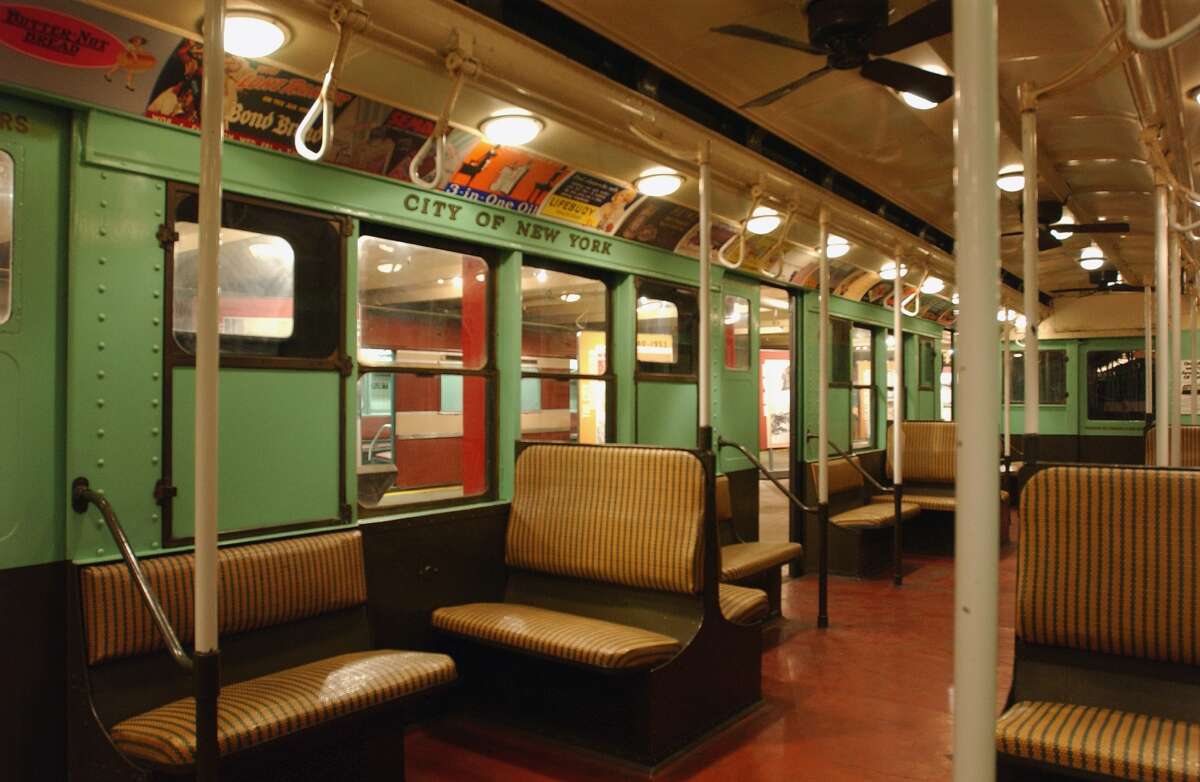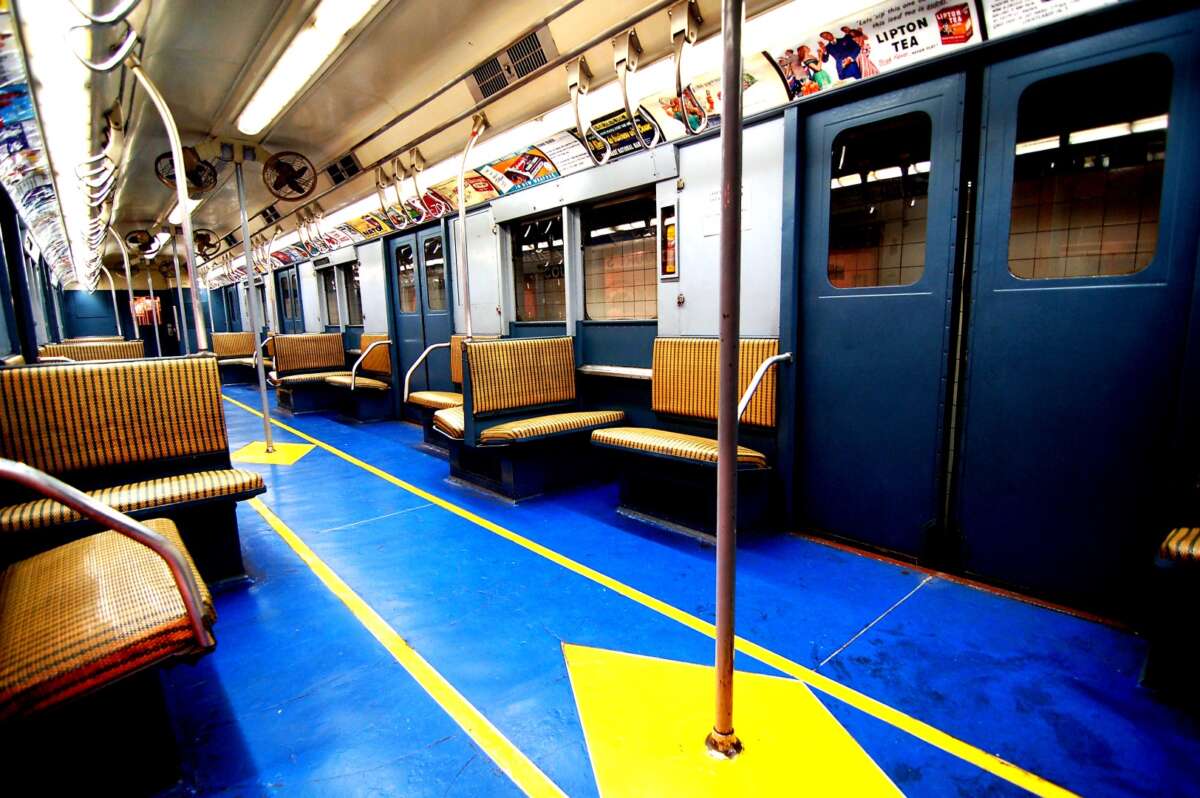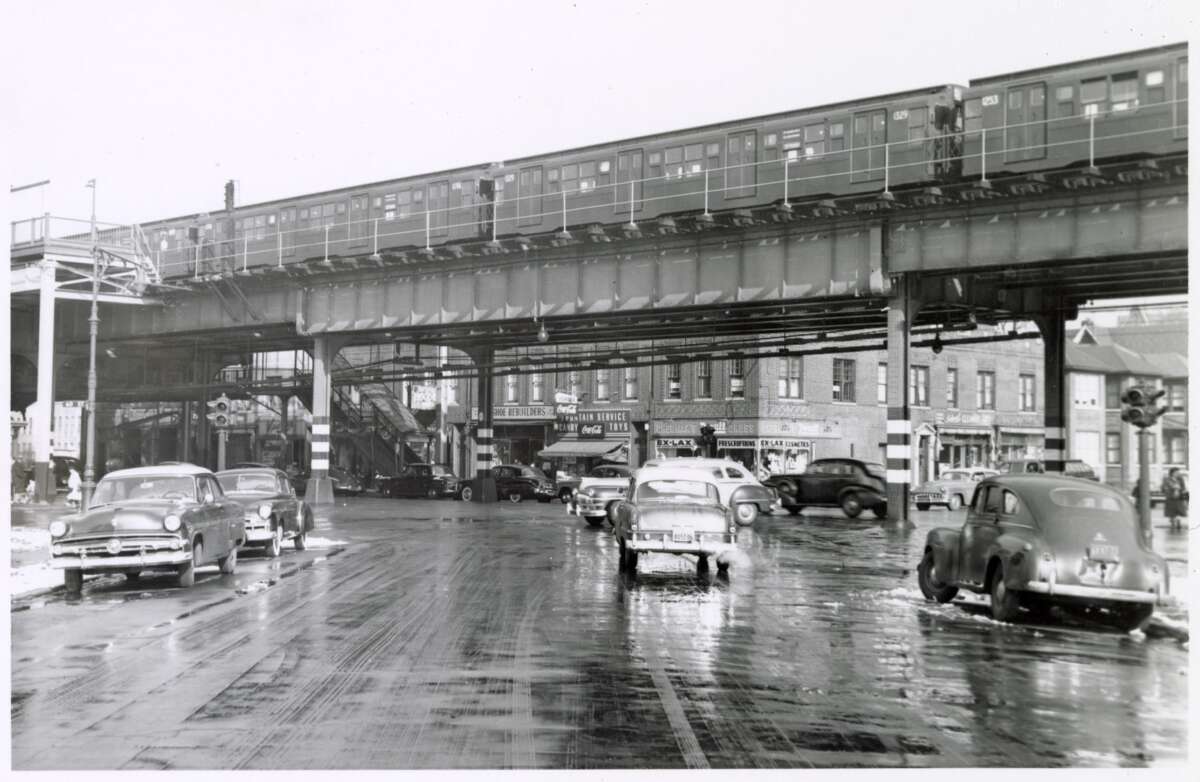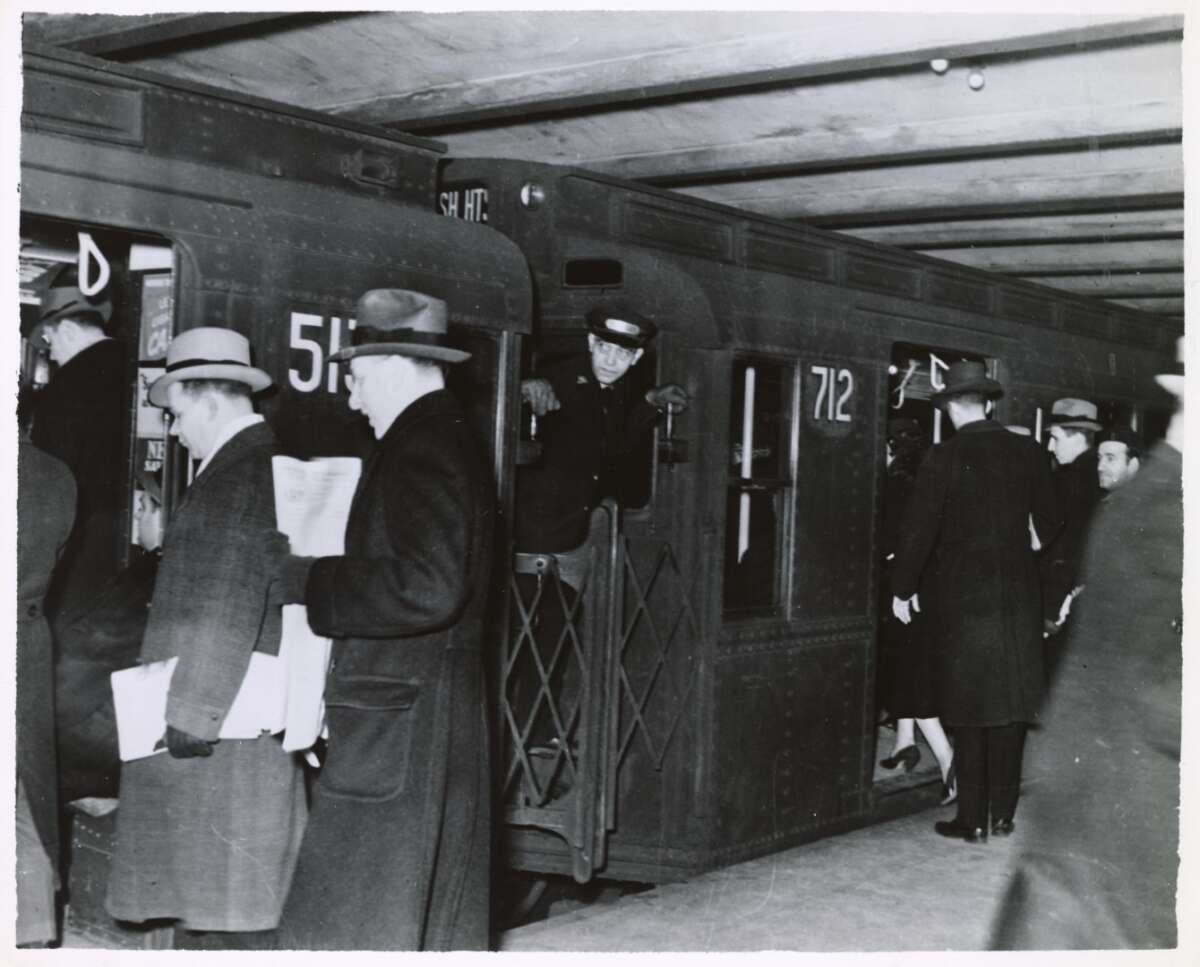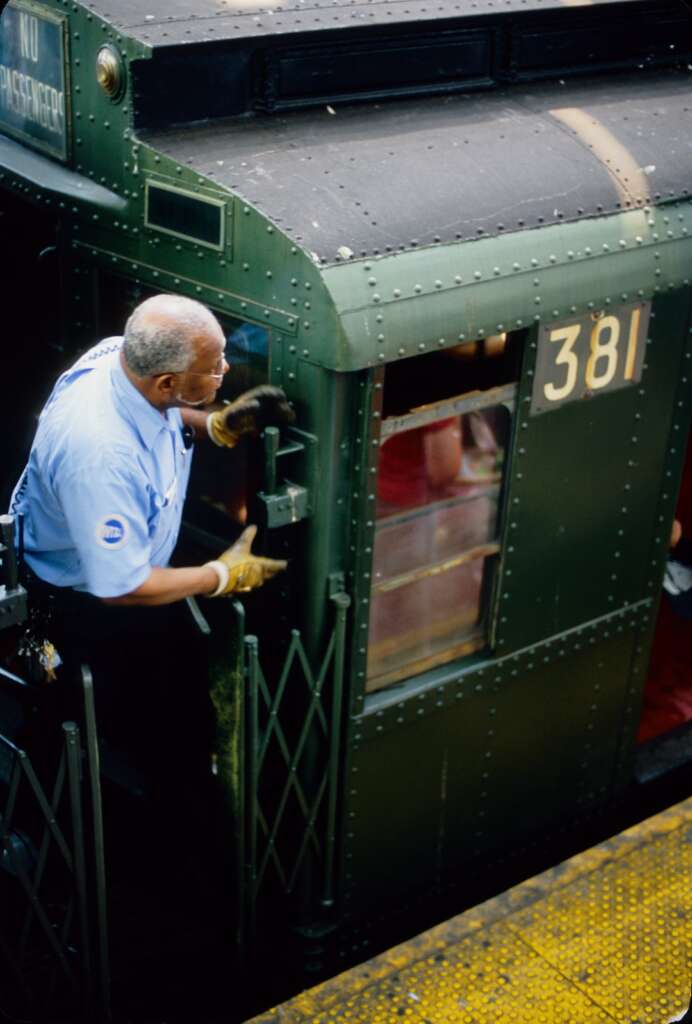Meet the “Arnines”
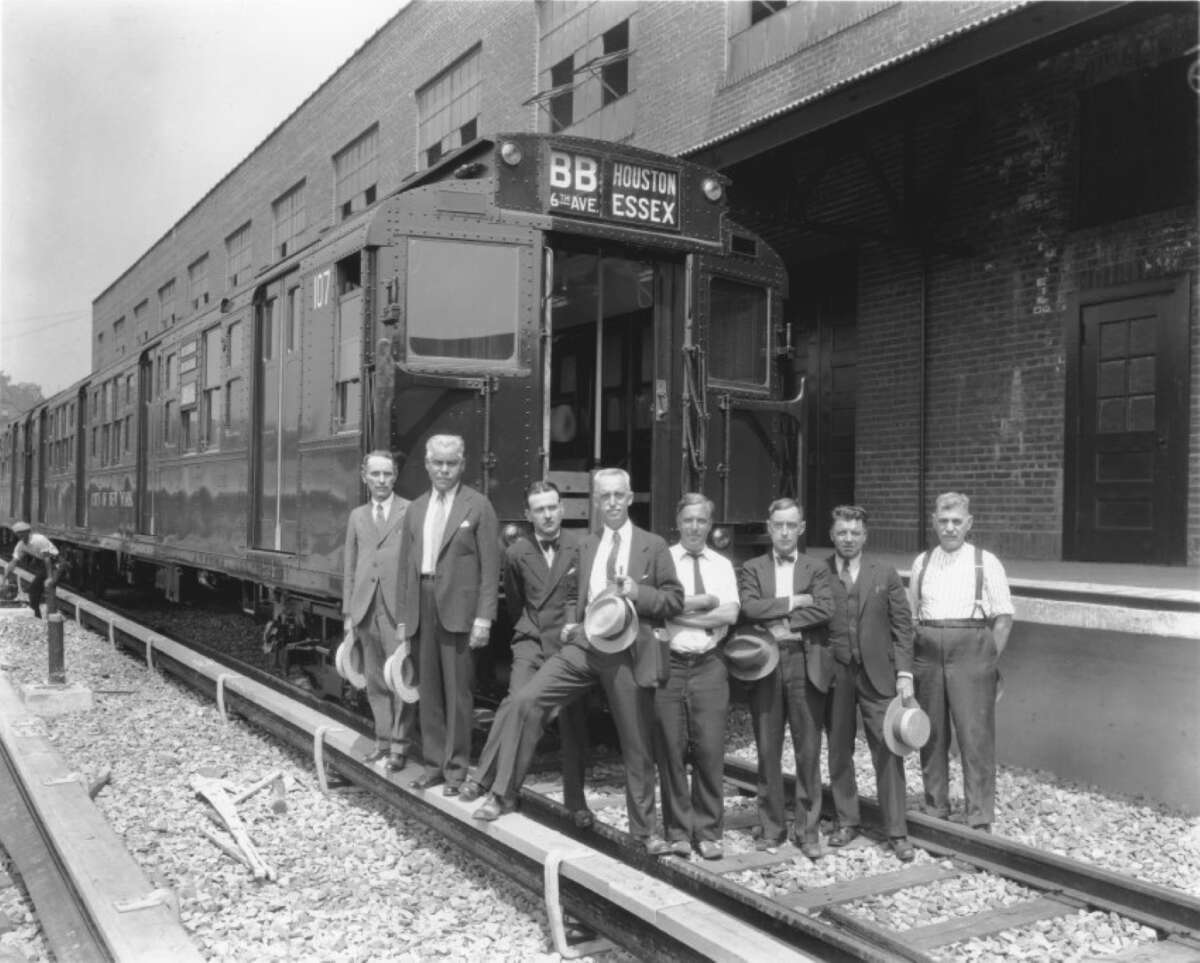
The first R-1 cars in the 207th Street Yard, 1930
New York Transit Museum Vincent Lee Collection
2005.61.8
A train of R-1 cars, led by car #107, surrounded by a crowd of men at the 207th Street Yard in The Bronx.
The R-1/9s were 1,703 similar New York City Subway cars built between 1930 and 1940 for the Independent Subway System (IND). All were built by three companies: the American Car and Foundry Company; the Pressed Steel Car Company; and Pullman Standard. The nickname “Arnines” is said to be derived from a literal spelling of the final contract under which these cars were ordered – contract “R9”. These cars are also known as “City cars”.
The cars entered service between 1931 and 1940 and remained on the rails until they were replaced between 1968 and 1977. The last of this broad grouping of cars were removed from passenger service in 1977.
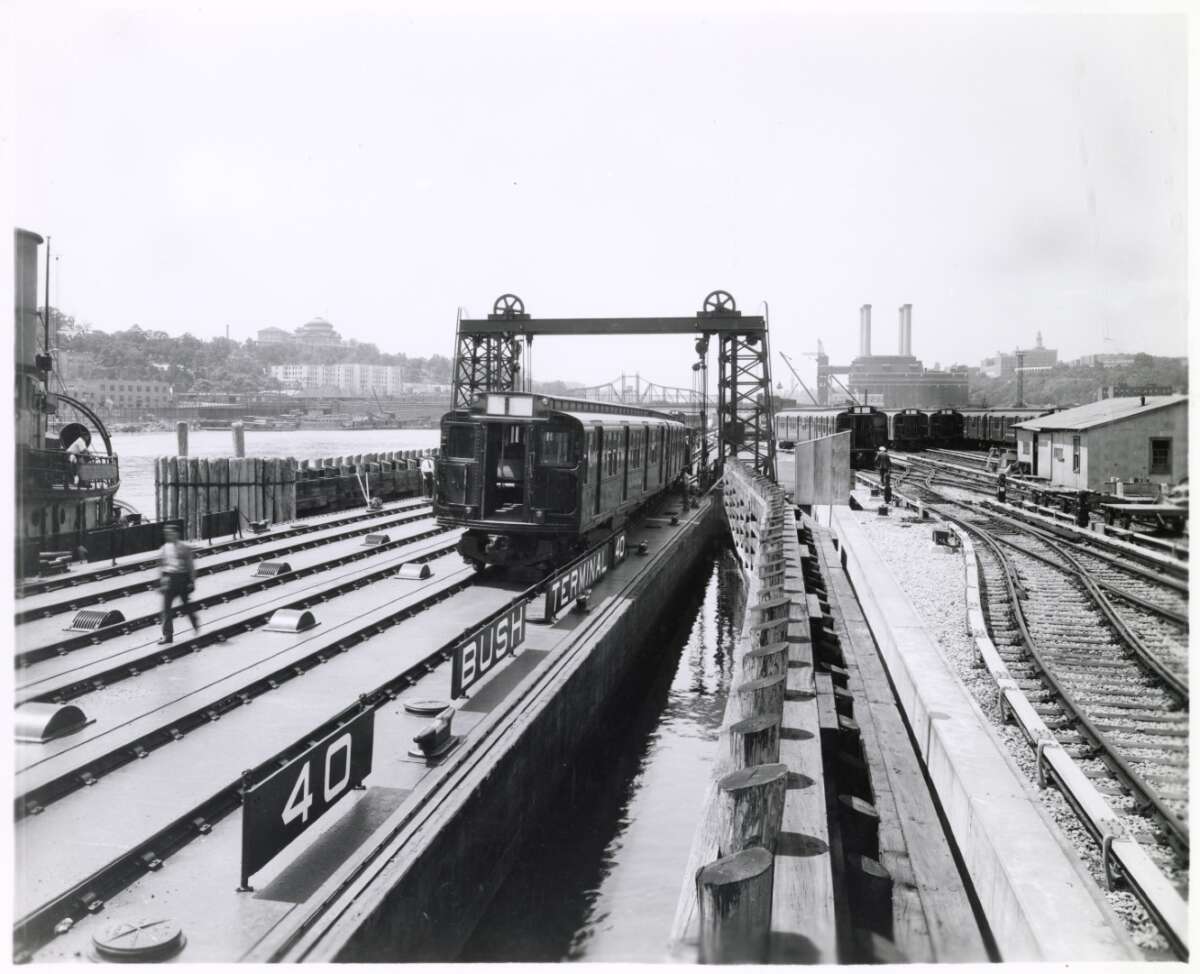
R-1 cars being unloaded at Bush Terminal, c. 1931
New York Transit Museum Lonto / Watson Collection
2010.20.14.1.37
The R-1 cars first entered the New York City subway system via Bush Terminal in Brooklyn.
Which car types became Arnines?
The “R” in car numbers such as R-1 means “rolling stock”, a rail industry term that refers to any vehicle that moves on a railway. The car types that became known as Arnines or “City cars” were:
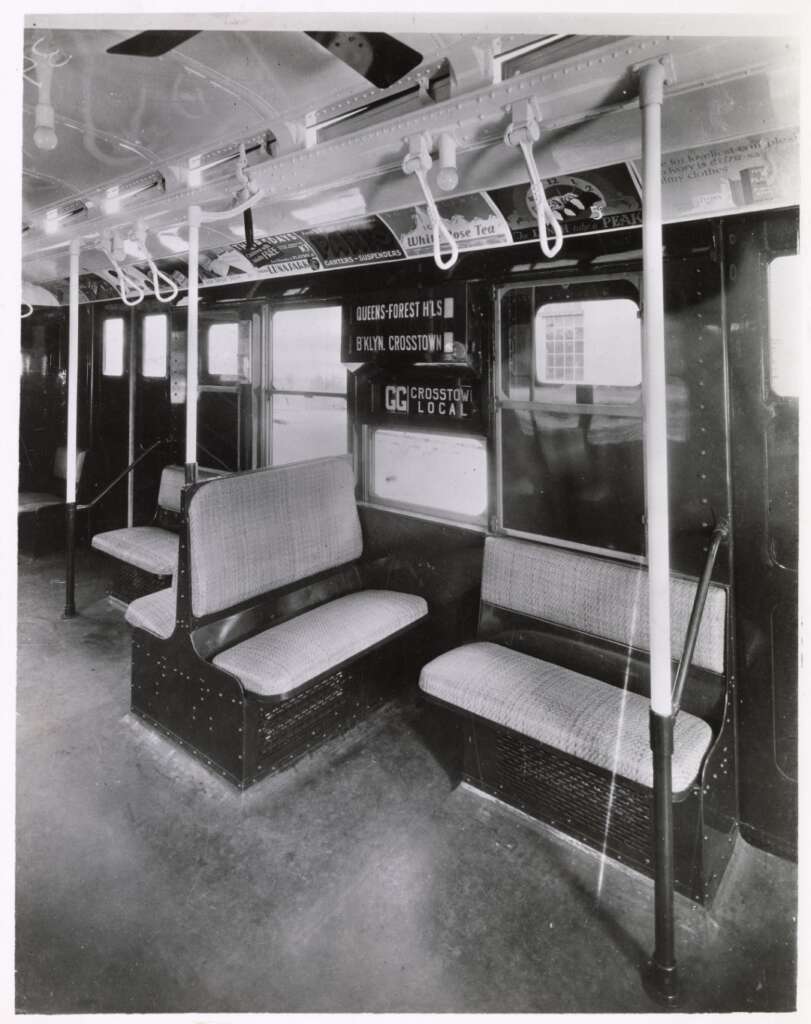
R-1 interior, 1931
New York Transit Museum Lonto / Watson Collection
2010.20.14.1.30
The R-1, nicknamed “City Car” was the first New York City Subway car type built for the IND. 300 cars were manufactured between 1930 and 1931 by the American Car and Foundry Company, numbered 100 through 399, all arranged as single units.
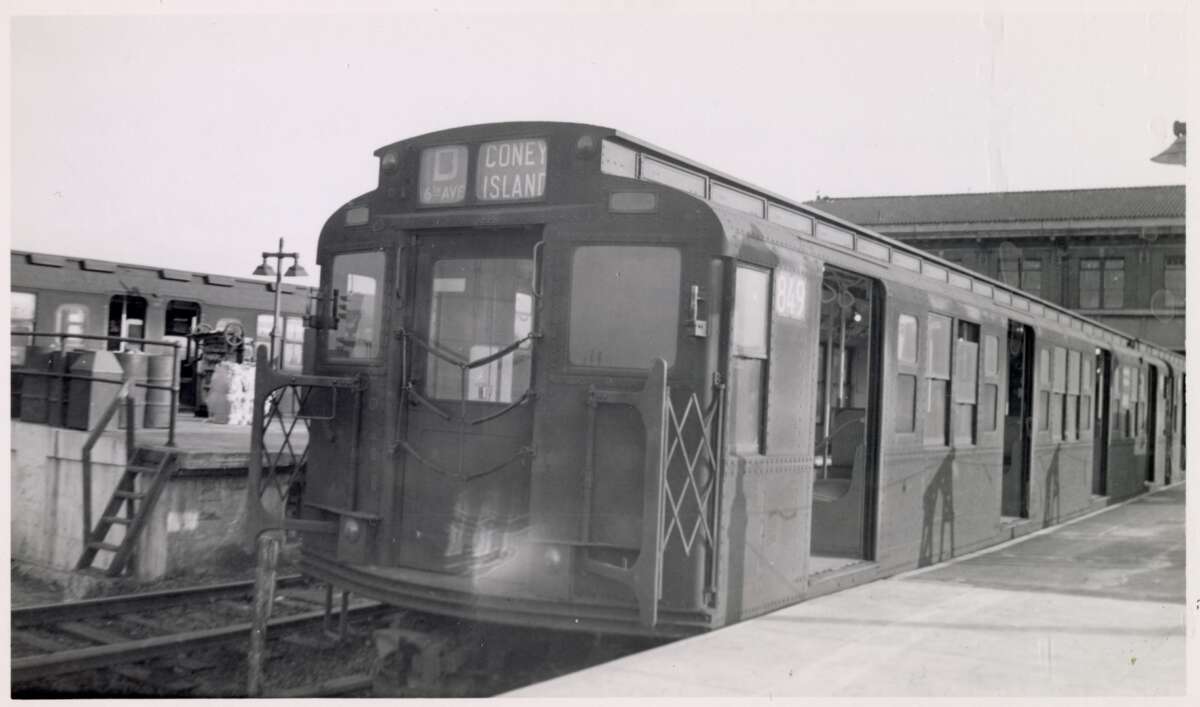
R-4 cars on the first Sunday of D service at Stilwell, 1954
New York Transit Museum Lonto / Watson Collection
2010.20.14.2.13
The R-4 was built from 1932 to 1933 by the American Car and Foundry Company. A total of 500 R4s were built, numbered 400–899, and arranged as single units.
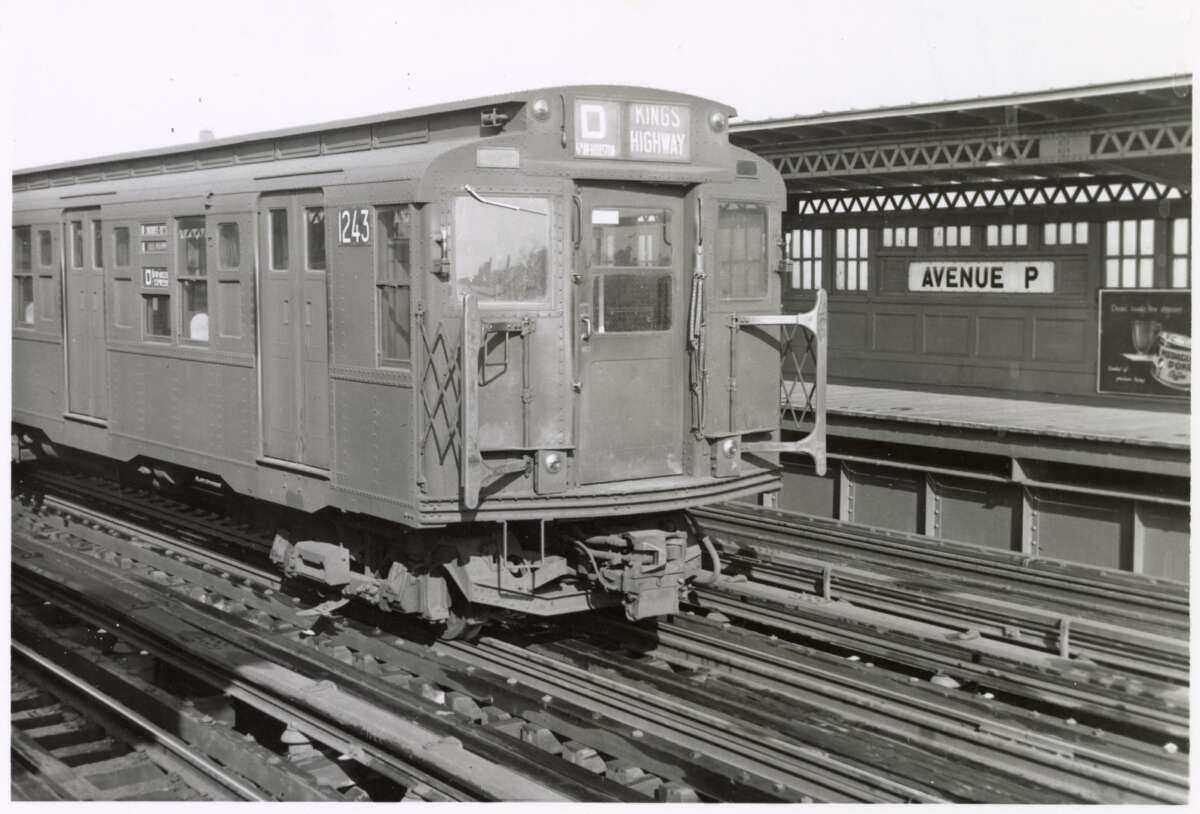
R-6-2 car at Avenue P, Brooklyn, 1955
New York Transit Museum Lonto / Watson Collection
2010.20.14.3.21
The R-6 was built from 1935 to 1936 by three manufacturers under separate orders, the American Car and Foundry Company, Pullman Standard, and Pressed Steel Car Company. A total of 500 cars were built, numbered 900–1399, and arranged as single units. There were three versions of the R-6: R-6-1, R-6-2, and R-6-3.
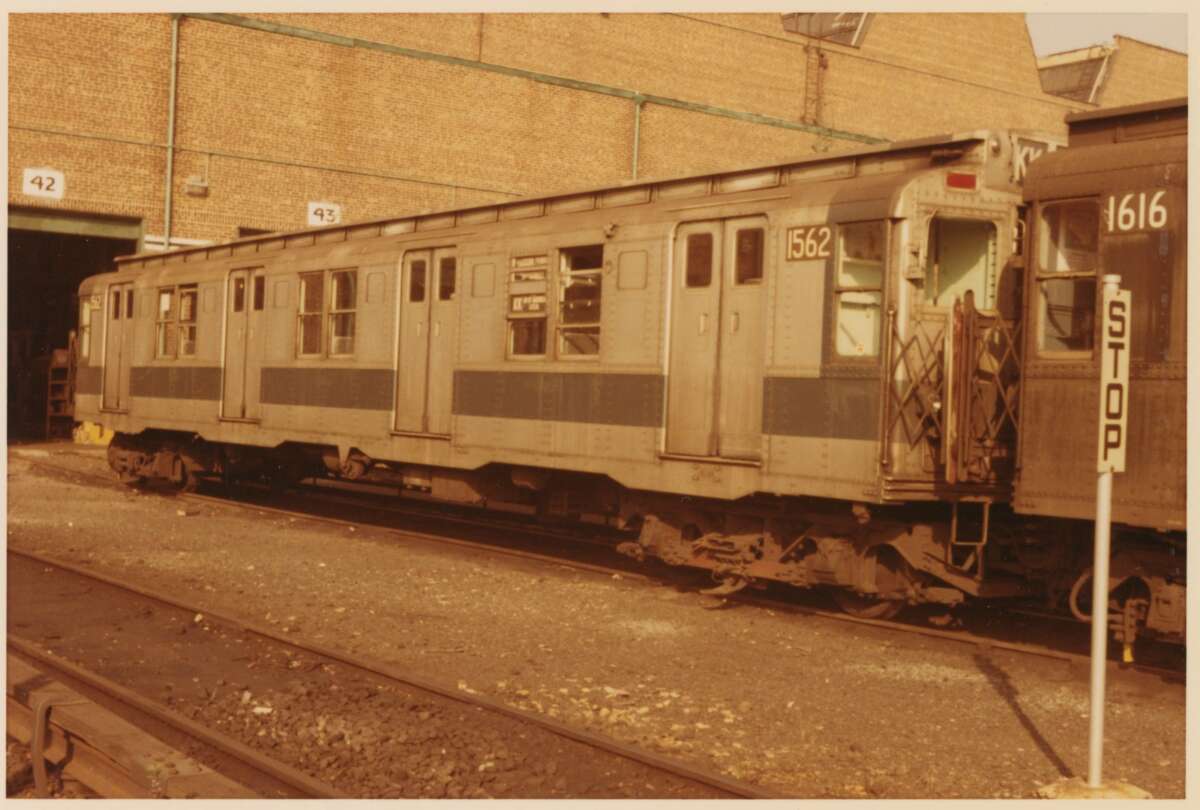
R-7A cars in Coney Island, 1971
New York Transit Museum Lonto / Watson Collection
2010.20.14.4.10
The R-7 was built from 1937 to 1938 by two manufacturers under separate orders, the American Car and Foundry Company and Pullman Standard. A total of 250 cars were built, all arranged as single units. Two versions were ordered: the R-7, which consisted of 150 cars, numbered 1400–1549, and the R-7A, which consisted of 100 cars, numbered 1550–1649.
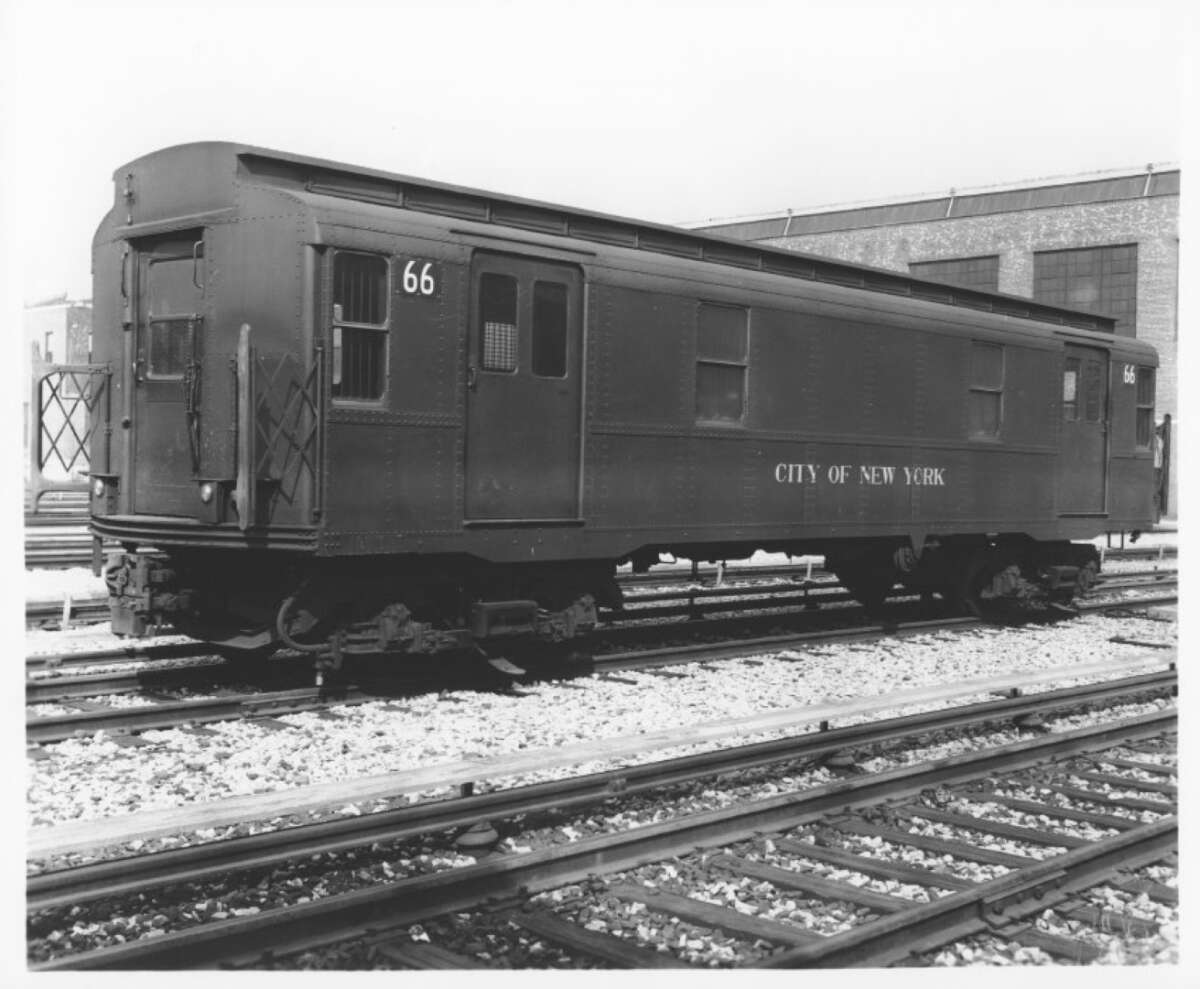
R-8A revenue car #66, c. 1940s
New York Transit Museum Vincent Lee Collection
2005.61.22
There were two R-8A cars built in 1939 by the St. Louis Car Company and were used to gather and transport tokens along the IND division.
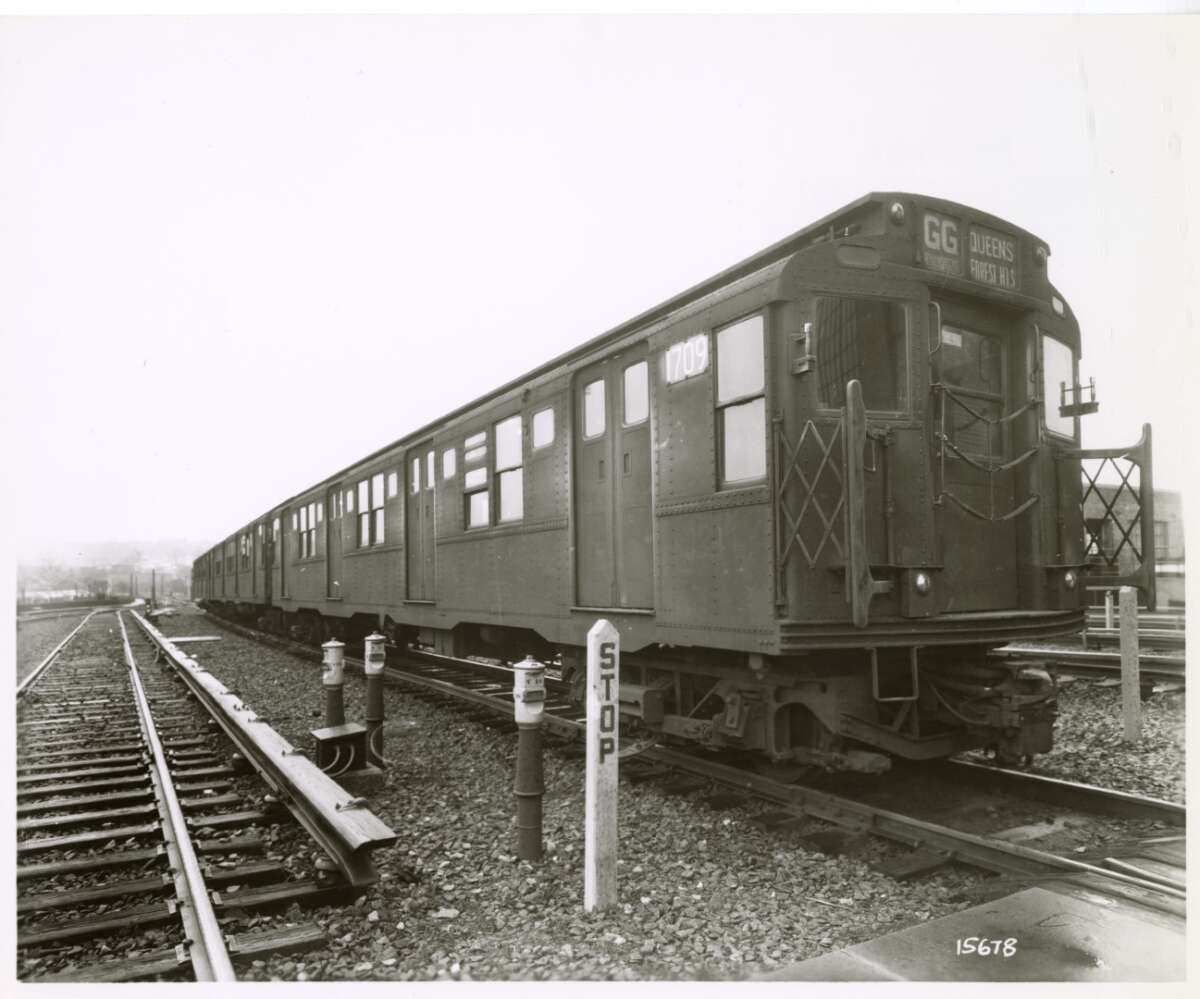
R-9 car #1709, n. d.
New York Transit Museum Lonto / Watson Collection
2010.20.14.5.15
The R-9 was built by the American Car and Foundry Company and the Pressed Steel Car Company in 1940. A total of 153 cars were built, numbered 1650–1802, and arranged as single units. They were the last “Arnine” type cars that were ordered before the merger of the IND with the IRT and BMT in 1940.
Why did New York City buy these cars?
When New York City planned out its subway lines, the overarching idea was to move more people in less time. Interborough Rapid Transit (IRT) and the Brooklyn-Manhattan Transit Corporation (BMT) had already designed several steel cars for use on their services, but the City felt improvements to these designs were needed, and they undertook research to determine the best design for an all-steel car.
Initially it was hoped that a new car could operate on BMT services and IRT lines. After prototyping and testing, this idea was modified to develop a car that would work on the new IND lines as well as BMT.
In November 1928, the Electric Railway Journal described the cars that would become the R-1:
“The new cars, as designed, will be 60 ft. 6 in. long, 10 ft. wide and 12 ft. high. The length will be 9 ft. and 2 in. longer than the Interborough Rapid Transit Company cars and about 7 ft. shorter than the single steel cars now used by the Brooklyn-Manhattan Transit company. They will permit easy movement of passengers through the end doors between cars, while the train is in motion. The width and height of the new cars will be the same as the width and height of the Brooklyn-Manhattan Transit company cars. The new cars will have four double doors on each side, each doorway being 3 ft. 10 in. wide…”
The biggest challenge was moving more people through the subway system in speed and comfort. From a capacity perspective, during rush hour, less seating means more people can fit in a subway car. However, when it is not rush hour, a car must have enough seats so that passengers can travel in comfort. As demonstrated by the cars on the BMT, a mix of cross seating and long seating would be a happy medium between rush hour needs and off peak comfort.
The Electric Railway Journal: “The arrangement of the seats is somewhat similar to the arrangement now in existence in the B.M.T. cars, but in the city’s new subway cars there is to be 2 in. more knee room between cross-seats than in the B.M.T. cars. Each car will seat 60 passengers, and when filled with a standing load, each car will have a capacity of 282 passengers. The station platforms are 660 ft. in length, enough to accommodate a train of eleven cars, nearly 30 per cent more than the longest B.M.T. train and 55 per cent more than the present Interborough trains of ten cars each.”
Having doors without center posts would also add to the speed at which passengers boarded and alighted. The design goal was to have at least 50% of the side of the train open for passenger movement — the reality is slightly less. It was estimated that a train that took four seconds less at each station (called “dwell time”) could allow the movement of an additional 3,000 people per hour through the system.
The first cars were ordered by the City in 1928-29 for service on the forthcoming Eighth Avenue Line (today’s A / B / C / D / E trains), which eventually opened in 1932. While they were being tested in Brooklyn, on the Sea Beach Line, they were called “City cars”.
Each of the cars were largely identical, with a utilitarian Machine Age design. Each of the six car types had slight variations to door and window details, and some other cosmetic changes. Contrary to the ERA’s article of 1928, the cars only sat 56 passengers.
Why were the cars retired?
By the 1960s, the fleet was beginning to show wear and tear. The fleet was supplanted by R-40, R-44, and R-46 cars. After retirement, most cars were scrapped, with a handful entering work service and about 20 preserved by museums.
How does the NYTM preserve these trains?
Like people, each train car is different, even if they are the same car type. A team of NYTM volunteers works closely with Car Equipment and other NYCTA departments to prepare our fleet for Nostalgia Rides and other events. Each car that is in service at one of these events has undergone the same safety testing as any other subway car in revenue service.
Some of the Arnines in the New York Transit Museum fleet had experimental refits done on them in the past, which our restoration team felt was important to preserve. Other cars received restorations that demonstrate some of the changes in materials over the service life of these type of cars.
Some examples:
- Car 103 (an R-1) received some Axiflow fans in the 1940s, which are still present in the car. The interior of the car has been restored to how it would have looked until the 1950s.
- Car 484 (an R-4) was one of two that received a PA system and round glass light fixtures called “bullseye” lights and was preserved in this state. It is restored to how it would have looked in 1946, when these lights were installed.
- Car 1300 (an R-6) has been restored to what it would have looked like in the 1950s: plasticized “rattan” seat cushions, and an interior painted “Patterson Green”, named for Charles L. Patterson, the first Transit Authority chairman (1953-1963).
- Car 1575 (an R-7A) was in an accident in 1946 and was rebuilt to be a prototype for the R-10 cars. It has been restored to look like it did in 1947. Cosmetically, it looks like the other R-10 cars in the Museum’s fleet but is still an R-7A mechanically.
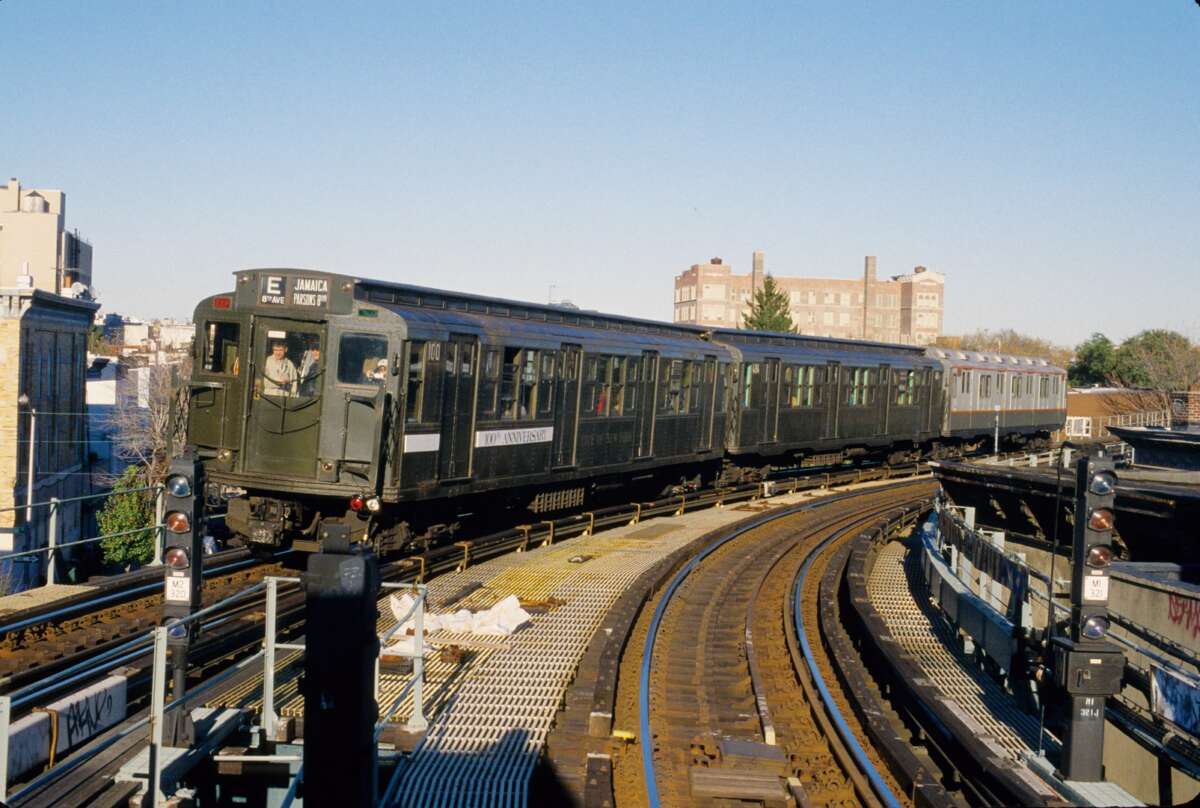
Arnines in 2003
Photograph by Ralph Curcio
New York Transit Museum Ralph Curcio Collection
2016.12.1.29.10
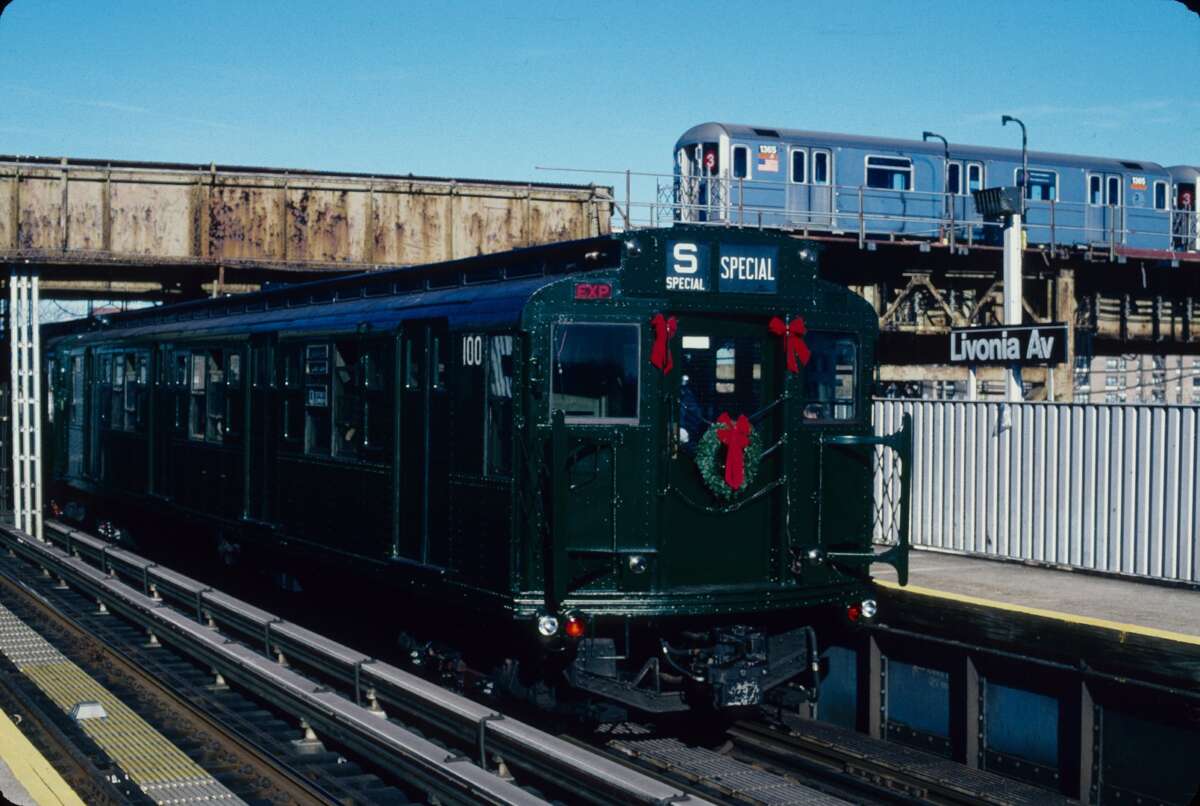
Arnines at Livonia Avenue, Brooklyn, 2003
Photograph by Ralph Curcio
New York Transit Museum Ralph Curcio Collection
2016.12.1.32.8


